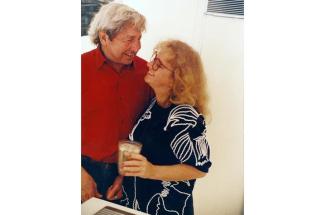“The story behind how the exhibition came to be at the UK Art Museum and the connection with UK alumna, Bradley Jeffries, reinforces that all UK grads are prepared for whatever wildly possible opportunity that might be presented to them over their lifetimes,” says Mark Shanda, dean of the UK College of Fine Arts. “We celebrate the generosity of the Bradley Jeffries family in making possible this remarkable opportunity for all of campus and the Lexington community to enjoy.”
Special thanks to the UK College of Communication and Information for partnering on this gift to the museum's permanent collection.
“We are thrilled that this gift of art to the university allows us to honor the legacy of Bradley Jeffries, a UK journalism alumna who played such an important part in Rauschenberg’s career,” said Jennifer Greer, dean of the College of Communication and Information. “Bradley used her journalism training to organize information, communicate with Rauschenberg’s many publics and tell the story of his process and practice. Without Bradley’s central position in his world, we would have less insight into his work, and we possibly would have fewer works to enjoy. Her protection of his time allowed him to concentrate on creating the beautiful pieces you see in this exhibit — and hundreds beyond that. It was a true partnership, and I love that that partnership has brought this amazing work of art to UK through the gift from Bradley’s family.”



